Dogs Love to Follow a Leader
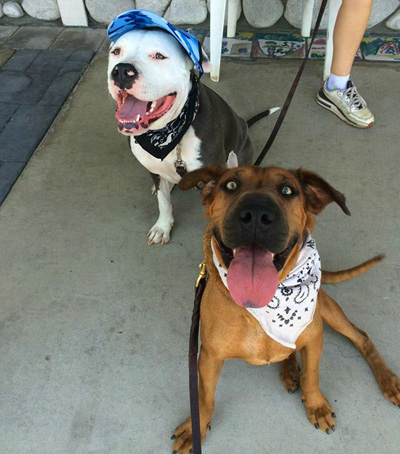
by Natalie
 The first time I walked the dogs with John, I walked Elvis. And Elvis walked like he had never walked on a leash before. He was everywhere, running onto the grass, smelling the trees, stopping abruptly and randomly. John, of course, knew what Elvis was capable of. He would watch Elvis and me, and not really give any direction, but rather kind of see how I handled it.
The first time I walked the dogs with John, I walked Elvis. And Elvis walked like he had never walked on a leash before. He was everywhere, running onto the grass, smelling the trees, stopping abruptly and randomly. John, of course, knew what Elvis was capable of. He would watch Elvis and me, and not really give any direction, but rather kind of see how I handled it.
Also, at the time, John didn’t know that I wanted to learn more about dogs; he thought I just wanted to walk, so he figured if I wanted to let Elvis walk all over me, then Elvis will walk all over me. (And he did!)
When I finally mentioned what I wanted to learn, John was very enthusiastic about it. We got to work on me learning how to walk the dogs the very next time I came over – and it began with the dogs not even taking a step outside!
As John explained to me, dogs love to follow a leader. However, if you do not step up and be the pack leader, they will assert dominance over you and basically do whatever they want. And as fun as that might sound for them, dogs actually love order. They love to follow the pack leader. You have to show your leadership skills in everything you do. Dogs don’t know exceptions. You can’t tell them it’s okay to jump on the couch just this one time and then get mad when they do it again. It’s all about consistency.
So, when walking one of the dogs, I needed to show them who the boss was. John decided that day that we were going to work with Elvis and Lucy (when she was still his foster, of course). We put their leashes on them and walked them to the 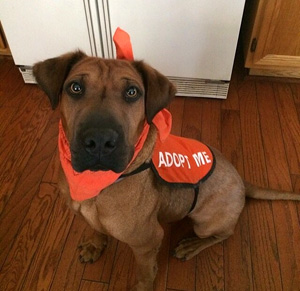 front door. Many people let their dogs lead them out the door, but John told me that’s a big mistake. If you let them go out first, then they will never listen to you while outside walking. They have already asserted dominance over you. Instead, what you need to do is walk out the door first, and then give them permission to come outside with you.
front door. Many people let their dogs lead them out the door, but John told me that’s a big mistake. If you let them go out first, then they will never listen to you while outside walking. They have already asserted dominance over you. Instead, what you need to do is walk out the door first, and then give them permission to come outside with you.
John demonstrated, and he made it look really easy. He told Elvis and Lucy to sit and stay, then he opened the door and walked out. They remained seated and looked at him expectantly before he said their release word (“Wiggle!”) and they ran out the door to him. From such a small exchange, John had shown them who was in control.
Then it was my turn. John waited outside, while we closed the door and I got situated. I made sure I was in front of Elvis and Lucy before I opened the door, but as soon as they saw John, they made a beeline for him. That’s when we figured it would be better if he was inside. So, we tried it again; I opened the door, and turned to face them to get them to sit, but they preferred to wrestle with me instead.
Needless to say, the first few tries were unsuccessful. Then John decided to finally tell me that if I wanted them to sit, then I just needed to walk into them. Just walk straight into them, and it will force them to sit down. He also said that if one 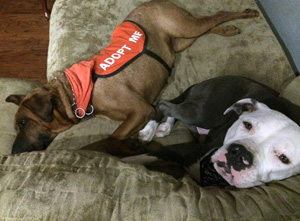 sits, the other will usually follow. So, that’s what I did. I walked into Lucy, and once she sat, Elvis immediately followed suit. I walked out the door, and there they were, still patiently (okay, it was more anxiously) waiting for their signal.
sits, the other will usually follow. So, that’s what I did. I walked into Lucy, and once she sat, Elvis immediately followed suit. I walked out the door, and there they were, still patiently (okay, it was more anxiously) waiting for their signal.
The best part about learning this lesson is seeing the difference in Elvis almost immediately. He occasionally tried to test me by running onto the grass, but for the most part, he stayed by my side.
It’s amazing how one small change can make the biggest difference in the way dogs will walk with you. From that little interaction, not only do they know who the leader is, but they also learn to respect you. That’s one lesson learned, and more to follow.
Recommended Posts
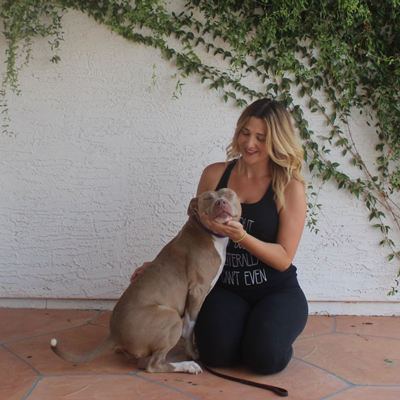
Through No Fault of Their Own Part V
September 12, 2017
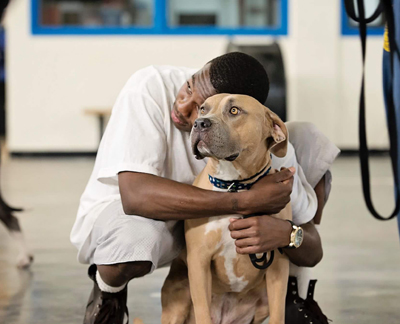
A Letter To The Men of Pawsitive Change at Corcoran State Prison
September 06, 2017
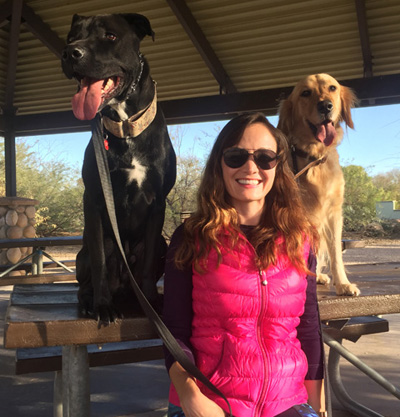
No Fault of Their Own Part IV
August 22, 2017
Comments
Comments are closed.







Great article Natalie. So many of us let our dog have the length of the leash, thinking that’s how it’s done. Makes me wonder why they make leashes so long, if we’re supposed to keep the dog by our side (more applicable if you are walking a group of canines – he he). John’s techniques (being the leader in all facets) are right along with Caesar Milan. Relationship with our pets can be better when “we” don’t submit to them. Duh!!!! And humans are the ones with brains. LOL
Thank you! It’s definitely an eye opener learning how even the smallest things can alter how a dog behaves, but I am learning a lot. 🙂